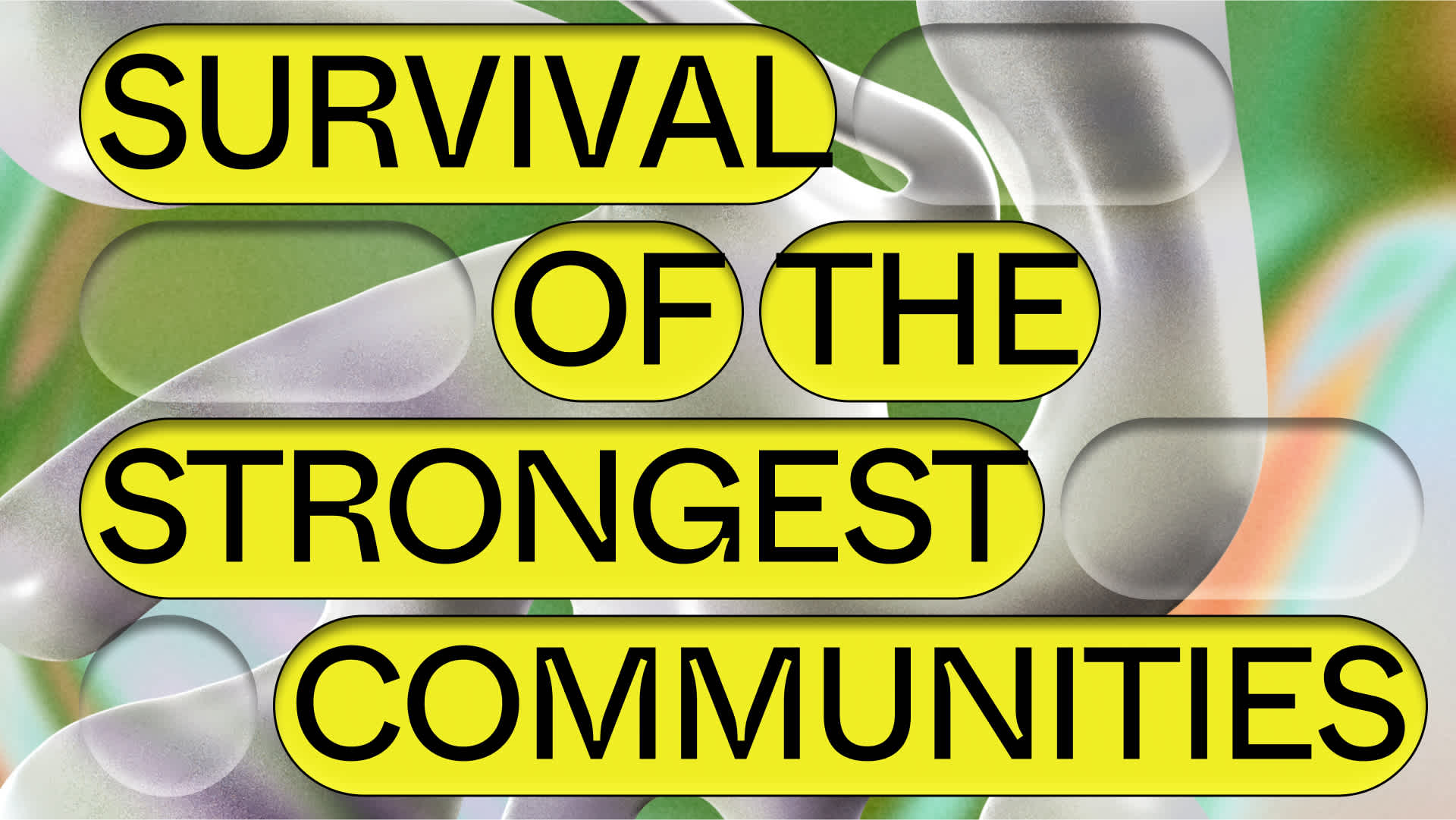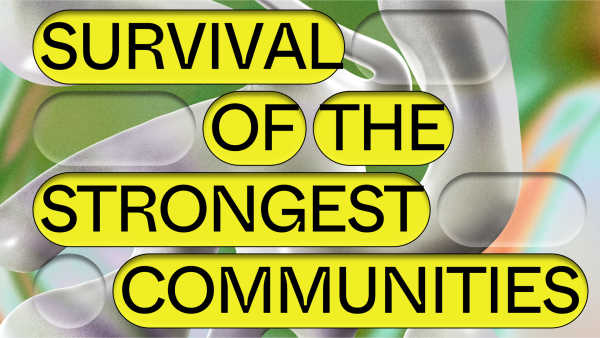Survival of the strongest communities.


Many companies and brands have lately had to ask themselves a previously unthinkable question: what if Twitter collapses? Recent volatility in Twitter’s management has sent many teams scrambling to create backup plans for a communications platform that was core to brand outreach for over a decade. While there are lots of reasons why relying on third-party platforms to build your fanbases has been really helpful: discoverability, seeing how fans organize themselves, connecting with tools that audience members use already, it became suddenly clear that those pages, lists and channels actually could disappear.
What happens when your communications with your audience can be massively interrupted by a third-party CEO’s whims? How do you reach the communities who love your stories, products or brand? Are you really connecting with your fans, or do you just follow them on Twitter?
While the moment is unusual—and a major social media platform probably won’t collapse—the questions that follow are key to the development of long-term success for entertainment franchises and existential to new projects that want to find and build audiences.
Who is my audience?
Where can I find them?
How can I engage them over time?
The last media revolution took us from a world that was connected mostly in person, to a world of people who meet online first and socialize there most often. As the technologies that brought us together online matured, they went from experimental, heavily interactive places to environments where brands could easily advertise and broadcast their communications to millions with the click of a button.
This has meant more people can engage directly than ever before, but shifts in these mature systems are already coming to light. It’s harder to target the people who will most love to engage with your ideas, your ability to engage is through third party systems, and without those systems… where will your audiences find you?
One of the exciting promises of web3 is the idea of decentralized networks, so that one decision maker can’t necessarily take down a platform used by hundreds or thousands, alone. But how do you build that network? How does that fit with your business model? Your marketing goals? If you’re a creator, why would you spend the time developing a corner of this new internet just for your project’s fanbase?
While social media platforms will persist, there’s a layer that has always separated successful, memorable projects from one-hit wonders: fan communities.
What do people mean when they talk about “communities”?
There’s one thing that films, games, books, or platforms like Facebook, Twitch or TikTok have in common. It’s not technology. It’s humans.
The healthiest businesses are human-centered. The job of any company or creator is to connect with people, and build as deep a connection as you can, for as long as you can. That’s key: whether you’re telling a story, or selling toothpaste.
You have to be able to find an audience. If you can find a small group of people that’s already into what you’re putting out there, it gets easier to reach a large group of people. The value of your future success will always be tied to how many people you can reach with new content, events and releases, and how many people want to engage with you regularly.
The group of humans who you connect with consistently, who are your biggest fans and advocates, are your community. They spend more time with your project, they seek out new elements of your project, and they tell others about your project. They have a powerful impact on a project’s success through word of mouth, purchases and evangelization. In short, they’re your fans.
Fans are the barometer of whether your project is appealing.
Many times, people connect for the first time over shared interests, shared hobbies, and shared affections for fictional characters. Every day since the Bat Cowl Collection launched in May 2022, there’s been a Twitter Spaces running for members of the DC collector community running for at least an hour. Most days, at least two spaces are running for community members who love to congregate, solve puzzles, and play games. That’s a lot of human time. That’s over thirty hours a month.What (other than work and sleep) have you spent 30 hours doing each month this year? : )
While the stories may be fictional, fans’ experiences are real.
While some fans love to discuss collectibles, they also discuss new fan art created by group members, or a new track dropped by musicians in the Bat Cowl Community. People show up because they love Batman. They stay because they have an opportunity to connect and create together because they have shared passions.
While the characters may be made up, the social bonds between fans are real and they’re meaningful.
If you’re helping people make and establish real relationships, that’s something they remember. When we talk about storyworlds and the metaverse, a lot of pixels are spent on the “whereness” of how people will congregate. But as we’ve seen in early 3D virtual worlds like Meta Horizons Worlds or Decentraland, The EU’s Holiday Party (sorry, EU), it’s not as much about having a destination, as having friends to meet you there. Rather than “if you build it they will come,” we have to ask, “who will come if you build it?”
Most creators and companies aren’t going to bet on the expense of building a massive multiplayer online virtual reality environment without a real expectation that more people will show up—consistently—than would watch a much cheaper series of YouTube videos.
The shortest distance between an idea and a community is a story.
When people talk about web3, they often talk about communities. A community is a group of fans. If fans are audience members who love your projects, communities are fans who self-organize around things they love regularly.
They’re really important if they happen to love the things you do. Over the course of the past decade, I’ve been working with teams developing story franchises across platforms. The single greatest indicator of the health of a franchise is whether or not there’s an active community of superfans that engages with one another.
From a business perspective, what is a fan? A fan is someone who wants to engage with what you’re putting out … A LOT.
They’re the people who will buy your merch, who will tune in again, and will tell people about their positive relationship to your project over and over again.
Superfans are the people who:
Talk about what you do
Share their excitement about what you do
Show up when you do things
Chase projects across platforms
Continue to join you year after year to play in the world you’re creating.
Why are superfan platforms key to building in web3?
For starters, doing superfan outreach has been historically a pure cost. Whether its membership clubs with modest fees or sponsorships, supporting fandoms often fell into marketing budgets that were also supporting urgent upcoming products or releases.
With the advent of NFTs and on-chain digital collectible platforms, a new revenue model has emerged that not only supports the work of connecting with passionate communities over time, but creates new ways to connect with these communities, too.
Why use web3 tools to build or support your fan community?
OWN YOUR SOCIAL GRAPH
NFTs can create new communication channels with members of fan communities, with the ability to target and gate experiences based on what people have collected. Critically, these are channels that you own; access isn’t mediated by a third-party platform like Twitter or Meta.
DEVELOP & CO-CREATE WITH FANS
One of the most exciting things about web3 superfan communities is that not only do members spend time enjoying your projects, they also provide feedback. Holder-only channels and governance features provide a framework for fans to shape IP, and share invaluable input. When they see their impact on the project, their trust in you grows.
CREATE MULTI-PLATFORM EXPERIENCES
Fans go everywhere, and web3 mechanics can be used to distribute and connect fans across different experiences: from games and comics to videos and streams. Access features can also have a major impact on promotional launches, providing new ways to engage fans in these off-chain and online events.
LEVERAGE NICHE CONTENT TO CREATE ADVOCACY
Not every web3 project needs to reach millions of users to be successful. The opportunity to create content with and for, a small, core group of users can have an outsize impact on a brand; with these brands becoming ambassadors for the larger world of your IP.
ACHIEVE MEASURABLE IMPACT
Web3 projects show us a slightly different look at how communities interact with the whole of a project’s activities, and can generate powerful new insights about how your fans engage with what you make. Combined with the direct relationship between community and the team creating the project, you have a richer understanding of your brand, and your fans.
If this sounds like fan clubs, it’s by design. The opportunity for your community to connect with the experiences and creators they love in a deeper way is a huge part of why communities work. Behind the scenes content and events build your relationship with your fans, and a way to connect your most powerful allies with new products, concepts and insights as well as activate archival content with groups who love it the most.
Successful brand design begins with community development.
Plenty of brands will continue to leverage the major social platforms. Despite the chaos, you can still reach your audience (with varying degrees of success) on Twitter. As we enter the next digital era, the brands who will continue to thrive will be the ones who center their communities.
Building and maintaining a good relationship with your community will mean they trust you with their precious time and money, and that the next project you launch will be worth caring about.







